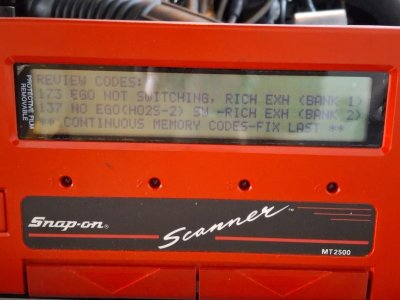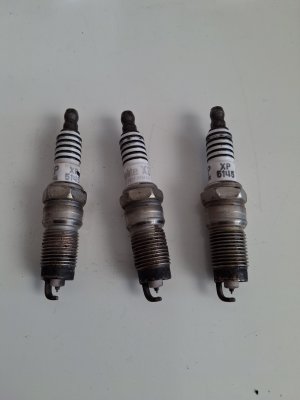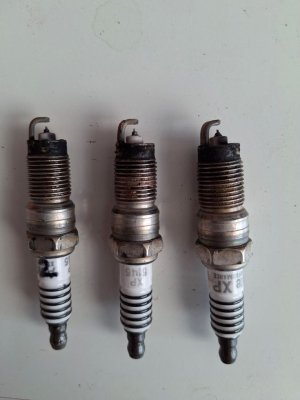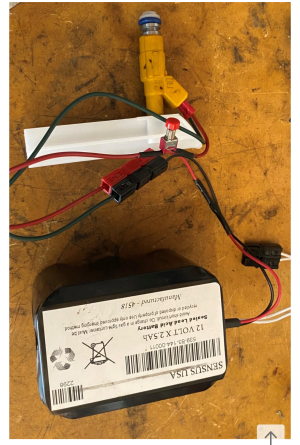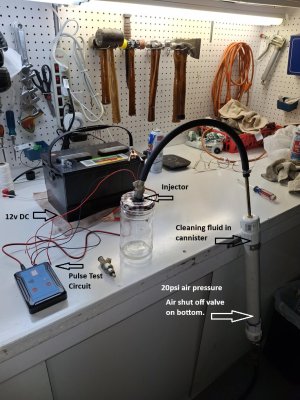- Joined
- Oct 2, 2023
- Messages
- 1,578
- Location
- New Mexico
- Cars in Garage
- 1
- Vehicle Details
- 1994 Mercury Cougar XR7, 3.8L, all stock
In my efforts to make this car run better (without an engine swap) I came across some tests to see why the O2's are putting out code 137 and 173, running rich. One of the tests was to see if the return fuel line is backing up back into the injectors. What is an easy way to check? I was thinking to remove the return line at the fuel rail and apply pressure to the return line to see if it has resistance. If it does, I would move along the line to the tank. The theory behind this is extra fuel is coming from somewhere into the injectors. Also put tubing from the fuel rail return and see if fuel is indeed being pushed out under various conditions.
Next idea was to check if fuel comes out of the vacuum line at the regulator to see if is somehow leaking out of the regulator.
THe next few items are to test the fuel pressure at the rail, which i did again and it is steady at 38, engine warm, idle and only increases during reve's. It also stayed at 38 for the longest time after the engine was shut off.
Another test, which may be fruitful is to test voltages at the O2's during three states, cold, key on, engine running cold, engine running warn. That would show if the 02s get the hint to change voltages under these conditions. Is it a closed loop when the engine is warm or an open loop when the engine is warm? I read two different explanations, then I just got confused and figured a beer was better than a headache.
For shitz and grins, I pulled the engine IAC connector at warm idle and sure enough it is working. The engine dropped in RPM and ran like crap. If the TPS was acting up, I would get irregular idle, which that is not an issue. I also sprayed some brake cleaner on the vacuum lines while under warm idle and no, and I mean no flucuation in idle.
One question I have is if you swap a new MAF with the old one, the reaction should be instant, right? Which leads to one more question, when a code is corrected, such as running rich, how long does it take the car to adjust? 20 miles of contius driving? I did clear codes after correcting the distributor issue but the codes came back. Which leads me back to the O2's or some bad timming pulses from the PCM to the injectors. Frack, I really don;t know what the f is wrong here. As mentined in another post, my tranny is acting up, which could be related. That will require a good diagnostic by a trustworthy tranny mechanic (is there such a thing?).
Thought i would offer something to the site to think about instead of beer, boobs and engines....
Next idea was to check if fuel comes out of the vacuum line at the regulator to see if is somehow leaking out of the regulator.
THe next few items are to test the fuel pressure at the rail, which i did again and it is steady at 38, engine warm, idle and only increases during reve's. It also stayed at 38 for the longest time after the engine was shut off.
Another test, which may be fruitful is to test voltages at the O2's during three states, cold, key on, engine running cold, engine running warn. That would show if the 02s get the hint to change voltages under these conditions. Is it a closed loop when the engine is warm or an open loop when the engine is warm? I read two different explanations, then I just got confused and figured a beer was better than a headache.
For shitz and grins, I pulled the engine IAC connector at warm idle and sure enough it is working. The engine dropped in RPM and ran like crap. If the TPS was acting up, I would get irregular idle, which that is not an issue. I also sprayed some brake cleaner on the vacuum lines while under warm idle and no, and I mean no flucuation in idle.
One question I have is if you swap a new MAF with the old one, the reaction should be instant, right? Which leads to one more question, when a code is corrected, such as running rich, how long does it take the car to adjust? 20 miles of contius driving? I did clear codes after correcting the distributor issue but the codes came back. Which leads me back to the O2's or some bad timming pulses from the PCM to the injectors. Frack, I really don;t know what the f is wrong here. As mentined in another post, my tranny is acting up, which could be related. That will require a good diagnostic by a trustworthy tranny mechanic (is there such a thing?).
Thought i would offer something to the site to think about instead of beer, boobs and engines....

